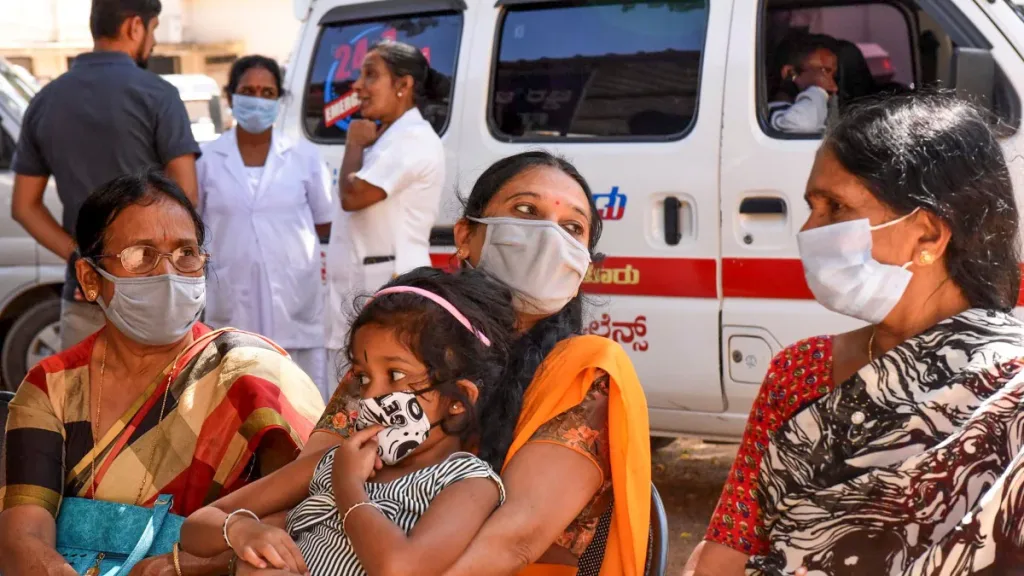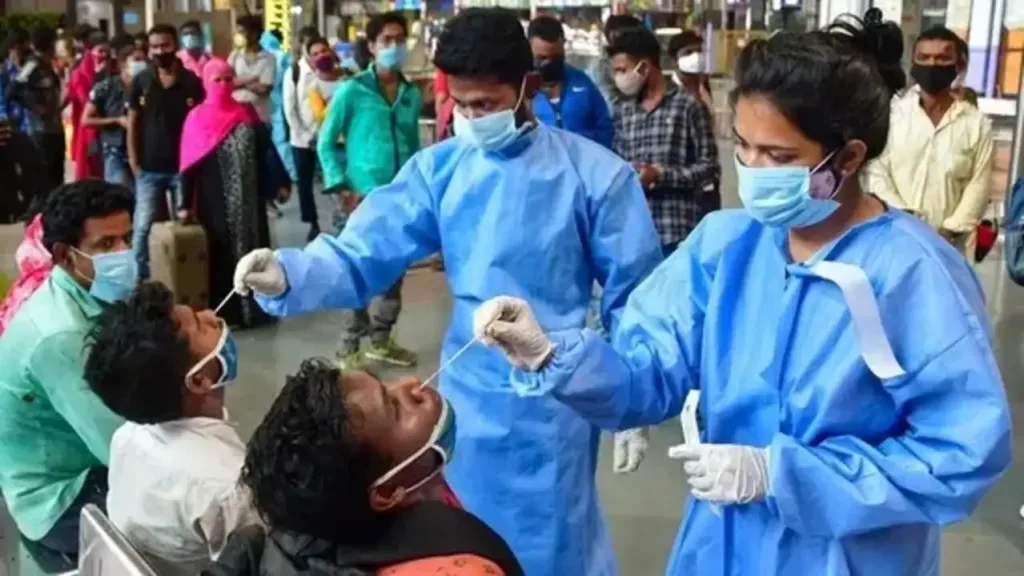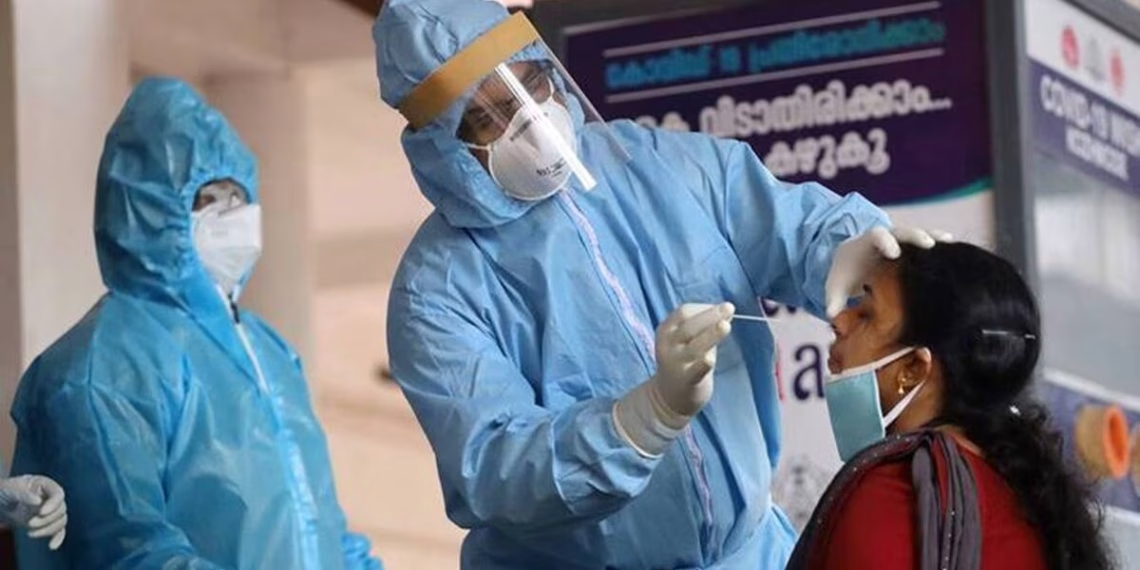India’s battle with COVID-19 has taken a concerning turn as active cases surged past the 4,000 mark on June 3, 2025, with five deaths reported in the last 24 hours, marking a significant milestone in the country’s ongoing vigilance against the pandemic. The resurgence, primarily driven by Omicron sub-variants, has prompted health authorities to intensify monitoring efforts while reassuring the public that the situation remains manageable. Kerala continues to bear the brunt of the outbreak with 1,416 active cases, followed by Maharashtra with 494 cases and Delhi experiencing a notable spike with 393 active infections. This development comes as a stark reminder that despite years of managing the
pandemic, COVID-19 remains a persistent public health challenge requiring continuous surveillance and preparedness. The Indian Council of Medical Research (ICMR) has confirmed through genome sequencing that the current surge is attributed to Omicron sub-variants circulating in southern and western regions, though officials emphasize these variants are not classified as severe, offering some relief amid rising numbers.
Table of Contents
Current COVID-19 Situation Across Indian States
The geographical distribution of active COVID-19 cases reveals distinct patterns across India’s diverse states, with Kerala maintaining its position as the epicenter of the current surge. The southern state reported 171 new cases in the latest 24-hour period, pushing its active caseload to 1,416, representing over 35% of the national total. This concentration in Kerala reflects the state’s robust testing infrastructure and transparent reporting mechanisms, which have consistently captured a more accurate picture of the pandemic’s progression.

Delhi’s situation demands particular attention as the national capital witnessed a sharp increase with 124 new infections, bringing its active case count to 393. This spike in Delhi serves as a warning signal for urban centers where high population density and increased mobility can accelerate transmission rates. Maharashtra, historically one of the worst-affected states during previous waves, reported 69 new cases, maintaining a relatively stable active case count of 494. West Bengal’s addition of 11 new cases, resulting in 372 active infections, indicates that the virus continues to circulate across different geographical regions, necessitating nationwide vigilance rather than localized responses.
Understanding the Omicron Sub-variants Driving the Surge
ICMR Director General Rajiv Behl’s confirmation that genome sequencing points to Omicron sub-variants as the primary drivers of the current surge provides crucial context for understanding this phase of the pandemic. The samples analyzed
from southern and western India reveal that these sub-variants, while capable of increased transmission, are not classified as severe in terms of disease outcomes. This finding aligns with global observations about Omicron’s evolution, where increased transmissibility often comes with reduced severity.
The scientific community’s ability to rapidly identify and characterize these variants demonstrates India’s enhanced genomic surveillance capabilities developed during the pandemic. This infrastructure allows health authorities to make informed decisions about public health measures and treatment protocols. The fact that these variants are not causing severe disease in most cases explains why hospitalization rates remain manageable despite the increase in active cases, providing reassurance to both healthcare systems and the general public.
Public Health Response and Monitoring Strategies
The health ministry’s measured response to crossing the 4,000 active cases threshold reflects lessons learned from previous waves. Rather than implementing blanket restrictions, authorities are focusing on targeted surveillance, enhanced testing in hotspot areas, and maintaining healthcare infrastructure readiness. This approach balances public health concerns with the need to maintain normal economic and social activities, recognizing that the population has developed significant immunity through vaccination and previous infections.

Healthcare facilities across affected states have been advised to maintain adequate stocks of essential medicines and oxygen supplies
while ensuring that COVID-19 protocols don’t disrupt routine healthcare services. The emphasis on monitoring rather than panic reflects a mature understanding of living with an endemic virus. Public health officials continue to stress the importance of basic preventive measures, including mask-wearing in crowded spaces, hand hygiene, and staying home when symptomatic, without mandating these behaviors through regulatory measures.
The Role of Vaccination and Natural Immunity
India’s extensive vaccination campaign, which has administered over 2.2 billion doses, plays a crucial role in keeping severe disease and mortality rates low despite rising case numbers. The combination of vaccine-induced immunity and natural immunity from previous infections has created a robust population-level protection against severe outcomes. This immunity wall explains why the current surge, while numerically significant, hasn’t translated into proportional increases in hospitalizations or deaths.

However, waning immunity remains a concern, particularly among vulnerable populations who received their last vaccine doses over a year ago. Health authorities are considering targeted booster campaigns for high-risk groups, including the elderly and those with comorbidities, while monitoring real-world vaccine effectiveness data. The five deaths reported in the latest 24-hour period serve as a sobering reminder that COVID-19 can still be fatal, particularly for unvaccinated or immunocompromised individuals.
Economic and Social Implications
The psychological impact of crossing the 4,000 active cases mark extends beyond health concerns to economic and social spheres. Businesses, particularly in the hospitality and travel sectors, watch these numbers closely, fearing potential restrictions that could impact operations. However, the government’s measured response and emphasis on monitoring rather than lockdowns has helped maintain market confidence and prevent panic-driven disruptions.
Educational institutions, which bore the brunt of previous waves through extended closures, continue to operate normally while maintaining basic safety protocols. This normalcy is crucial for addressing learning losses accumulated during the pandemic years. The current approach demonstrates a shift from zero-COVID strategies to learning to live with the virus as an endemic threat, balancing health security with socioeconomic needs.
Ukrainian Drones Hit Russian Airbase: Historic Strike Destroys 40 Aircraft in Deep Territory Attack
FAQs
Q: Should we be worried about the current surge in COVID-19 cases crossing 4,000?
A: While any increase in COVID-19 cases warrants attention, health officials including ICMR Director General Rajiv Behl have stated there’s no immediate cause for worry. The current surge is driven by Omicron sub-variants that are not classified as severe. The combination of widespread vaccination coverage and natural immunity from previous infections provides substantial protection against severe disease. However, individuals should remain vigilant, particularly those in high-risk categories, and continue following basic preventive measures like hand hygiene and wearing masks in crowded spaces.
Q: Which states are most affected by the current COVID-19 surge?
A: Kerala leads with 1,416 active cases, accounting for over 35% of India’s total active cases. Delhi has seen a significant spike with 393 active cases after reporting 124 new infections in 24 hours. Maharashtra maintains 494 active cases, while West Bengal has 372. The concentration in these states reflects various factors including population density, testing rates, and reporting mechanisms. Health authorities are closely monitoring these regions while maintaining surveillance across all states to prevent wider spread.








